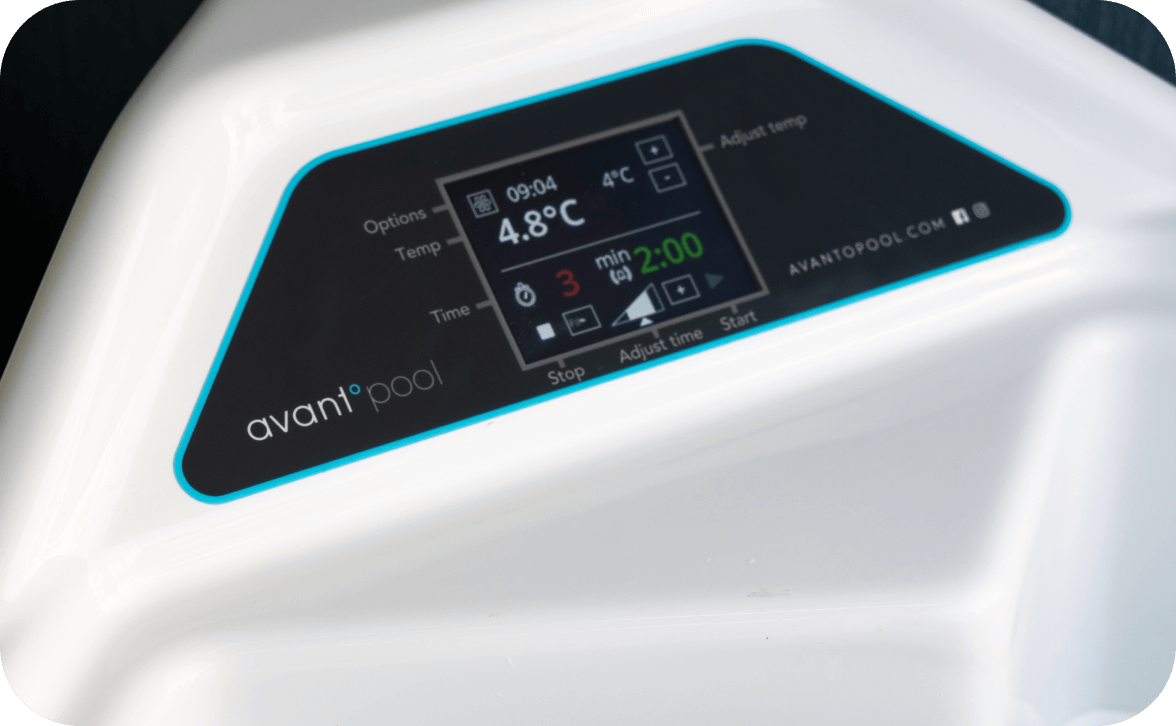-
Cold improves resistance
Cold exposure enhances resistance by activating immune function and fortifying myocardial and blood circulation. Ice swimmers, for instance, experience increased resistance and reduced upper respiratory tract infections, with more than half reporting a marked reduction in flu symptoms. These findings suggest an adaptation of the immune system to cold. Cold also triggers the release of the stress hormone adrenaline, connecting the human nervous system and natural immunity. The cold pool's challenges the body beyond its comfort zone which has a direct impact on immune functions.
In addition, the functioning of the nervous system in the cold affects oxygen uptake, which is reflected in increased energy. A Dutch study on regular cold showers demonstrated a reduction in sick leave among participants. The cold pool, providing controlled and adjustable regular cold exposure, offers various health benefits.
-
Cold reduces stress, raises mood and revitalizes
Cold water stimulates brain chemicals controlling emotions, concentration, and alertness. Cold water causes a stress reaction when the body begins to secrete the stress hormones like adrenaline, noradrenaline and cortisol. At the same time, increased levels of the pleasure hormones like endorphin, serotonin and dopamine are also released.
The cold bath proves a natural and effective means to elevate neurotransmitter levels, creating a chemical burst for improved mood and energy. Cold water facilitates higher stress tolerance, and regular exposure contributes to increased dopamine and endorphins, associated with reduced depression and stress. Cold water dips decrease uric acid levels, aiding stress control. Studies highlight the effectiveness of cold water baths in treating postpartum depression, sometimes surpassing the efficacy of medication.
-
Cold relieves pain
Many individuals with musculoskeletal disorders find relief through cold treatments. Cold treatment, commonly used for pain reduction, inflammation, and swelling resulting from injuries or diseases, induces a stress reaction in the body. This reaction leads to the secretion of noradrenaline, skin surface blood vessel contraction, increased blood pressure, and heartbeats. Repeated cold exposure enhances the body's ability to produce pain relief, contributing to improved perceived health and well-being. Finnish studies indicate a significant increase in plasma noradrenaline content after ice swimming, potentially promoting pain relief. The cold pool provides relief for various aches and pains, serving as a safe method for pain reduction in infections. Pain meter studies have shown a significant decrease in the pain expressed by subjects during the cold treatment period compared to the control period.
-
Cold improves sleep quality
In Finland, ice swimming has always been seen as a cure for aches, stress and sleep problems. A more scientific approach and studies among ice swimmers reveal that there are a number of causes behind the positive effects of cold water.
Cold exposure facilitates sleep and improves the quality of sleep through the body’s own nervous system. The effect of cold releases serotonin, which helps alleviate difficulty sleeping. The effects of cold on achieving higher quality sleep are largely caused by the same factors that positively impact mood.
Long, high-quality sleep is important for everyone, but ensuring adequate and high-quality sleep is especially important for competitive athletes who need to be in optimal condition almost every day. Today, more and more attention is being paid to recovery, rest and sleep as part of an athlete’s overall coaching plan and wellbeing.
-
Cold activates brown fat
Brown fat is active adipose tissue with more blood vessels and a busier metabolism than white adipose tissue. Brown fat is able to produce heat and consume energy instead of storing it. The main function of brown fat is thermogenesis.
Cold exposure is one of the most effective means of activating brown fat.
Active brown fat consumes energy and is able to remove excess fat from the bloodstream.
